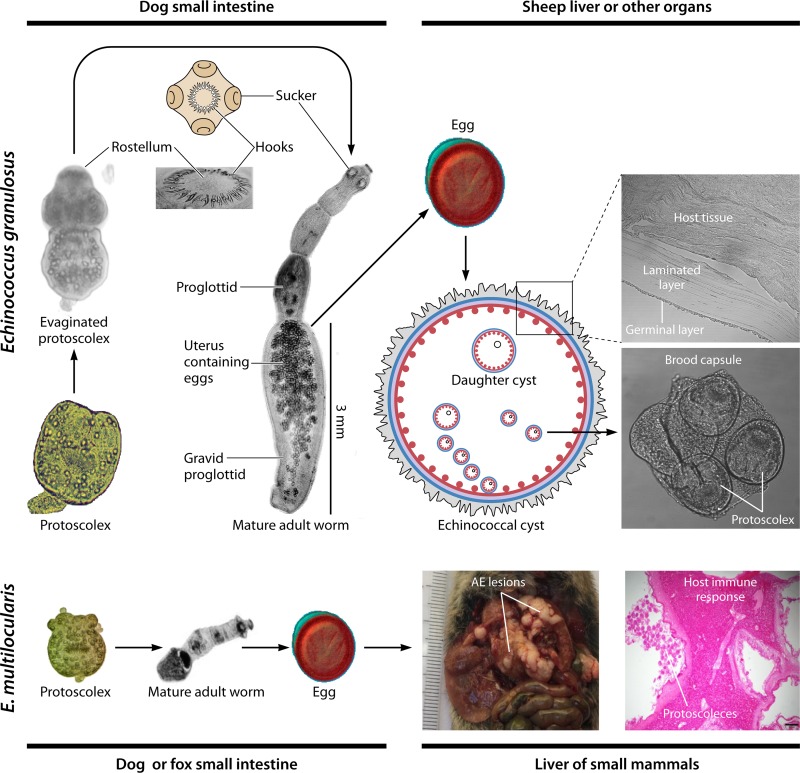FIG 2.
Different developmental stages in Echinococcus granulosus and E. multilocularis. Growth of the larval cyst is unlimited, and it can, for E. granulosus, grow to 30 cm or more in humans, while the adult worm, egg, and protoscolex are limited in size and shape. Echinococcus sp. tapeworms have no gut, circulatory, or respiratory organs and have a highly adapted relationship with their mammalian hosts which they exploit for nutrients, signaling pathways, and neuroendocrine hormones. Strobilization is a notable feature of cestode biology, whereby proglottids (segments) bud distally from the anterior scolex, resulting in the production of tandem reproductive units (proglottids) exhibiting increasing degrees of development. Echinococcus is monoecious, and the last segment (gravid proglottid) produces diploid eggs that give rise to ovoid embryos, the oncospheres. However, a striking feature of the biology of Echinococcus is that the protoscolex has the potential to develop in either of two directions: it may develop into an adult tapeworm producing sexually produced eggs in the dog gut, or, if a hydatid cyst ruptures within the intermediate or human host, each released protoscolex is capable of differentiating asexually into a new cyst, a process termed “secondary” echinococcosis. While a unilocular fluid-filled bladder (cyst) is a feature of E. granulosus sensu lato in its larval stage, the metacestode of E. multilocularis consists of a mass of small, multilocular vesicles embedded in the immune reaction of the host (granuloma and fibrosis). These multiple and aggregated vesicles grow by proliferation of cells in the germinal layer of the metacestode.

